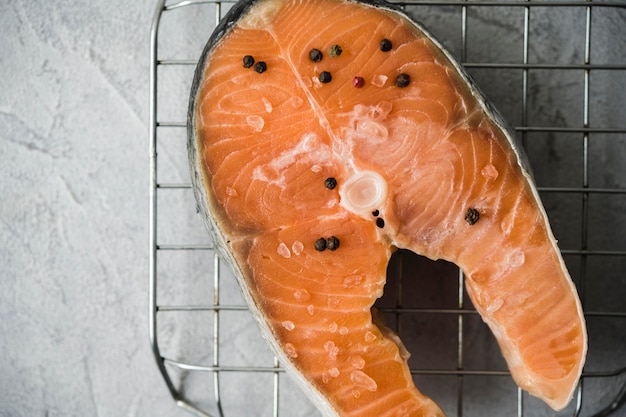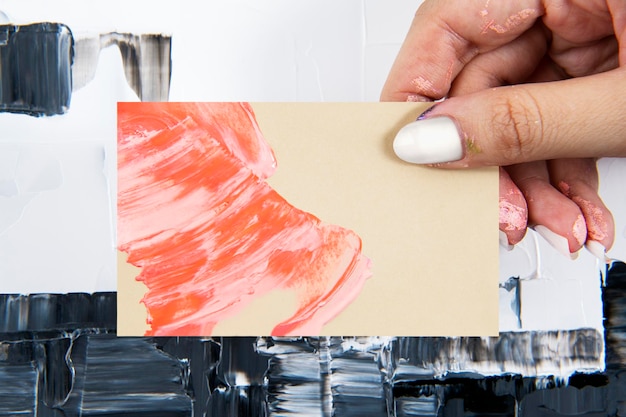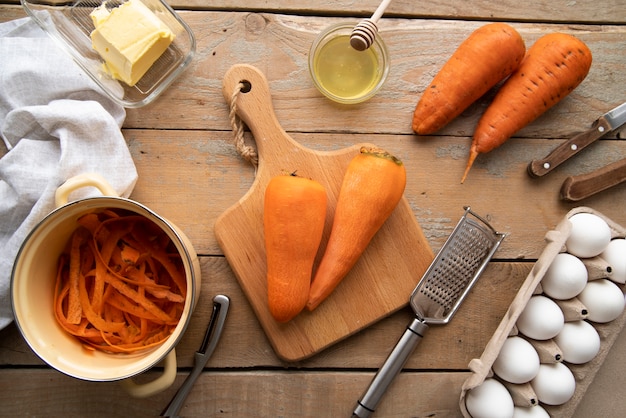As a seasoned home cook, I’ve baked salmon countless times. I’ve experimented with various recipes, techniques, and temperatures, and let me tell you, the journey to that perfect, flaky, moist piece of salmon has been quite the adventure. But trust me, the effort is well worth it. There's nothing quite like sinking your teeth into a beautifully cooked salmon fillet that melts in your mouth. And the secret? It’s all about mastering the oven temperature. That's why I'm sharing my foolproof guide to oven-baked salmon, complete with temperature recommendations for every preference.
(Part 1) Why Oven Temperature Matters: A Journey of Culinary Discovery

You might be thinking, “Isn’t salmon just salmon? Why all the fuss about temperature?” But trust me, it makes a world of difference. A slightly too-high temperature can turn your salmon into a dry, rubbery mess, while a low temperature might leave it raw in the centre. I've learned this the hard way - I've had my fair share of overcooked, dry salmon disasters. And believe me, nobody wants that.
The Science Behind It
The science behind it is pretty straightforward. When you bake salmon, the heat penetrates the fish, cooking it from the outside in. The higher the temperature, the faster the heat travels, leading to faster cooking. But this also means it’s easier to overcook the salmon and end up with that dreaded dry texture. On the other hand, a lower temperature allows the heat to penetrate more gently, ensuring the salmon cooks evenly and retains its moisture.
The Importance of Consistency
This is where temperature consistency comes into play. You need a steady oven temperature to ensure your salmon cooks evenly. If your oven temperature fluctuates, your salmon might end up with uneven cooking, leading to a mix of raw and overcooked areas. That's why it's always a good idea to invest in a reliable oven thermometer to ensure your oven is calibrated correctly.
(Part 2) The Temperature Guide: Tailored to Your Tastes

Now, let's get down to the nitty-gritty. Here’s a temperature guide based on my years of baking salmon and countless taste tests (it’s a tough job, but someone’s gotta do it!). Keep in mind, these are just guidelines. The best temperature depends on your preferred level of doneness, the thickness of your salmon fillets, and your oven. Don’t be afraid to adjust the temperature and cooking time accordingly.
For the Rare Salmon Fanatic
If you like your salmon with a touch of pink in the centre, go for a lower temperature. This is for those who enjoy a soft, delicate texture and a vibrant, slightly raw flavour. The internal temperature should be around 115°F (46°C). Think of it as a delicate balance between cooked and raw, where the salmon is still incredibly tender and juicy.
- Temperature: 350°F (175°C)
- Cooking Time: 12-15 minutes for 1-inch thick fillets.
For the Medium-Rare Enthusiast
This is my go-to temperature for salmon. It strikes a perfect balance between a cooked exterior and a slightly pink centre. The salmon is firm but still juicy and flavorful. The internal temperature should be around 125°F (52°C). This is the sweet spot for many, offering a delicious combination of cooked and raw flavours.
- Temperature: 375°F (190°C)
- Cooking Time: 10-12 minutes for 1-inch thick fillets.
For the Medium Salmon Lover
This is a great option if you want your salmon cooked through but still retain some moisture and a delicate flavour. The internal temperature should be around 135°F (57°C). It's a good middle ground between medium-rare and well-done.
- Temperature: 375°F (190°C)
- Cooking Time: 13-15 minutes for 1-inch thick fillets.
For the Well-Done Lover
If you prefer your salmon fully cooked, a higher temperature is your best bet. Just be careful not to overcook it, as this can lead to a dry and crumbly texture. The internal temperature should be around 145°F (63°C).
- Temperature: 400°F (200°C)
- Cooking Time: 8-10 minutes for 1-inch thick fillets.
(Part 3) The Art of Baking Salmon: A Step-by-Step Guide

Now, let’s get baking! Here's my go-to method for perfectly oven-baked salmon. It’s simple, reliable, and always yields delicious results.
1. Prep the Salmon
Start by patting your salmon fillets dry with paper towels. This helps to ensure the skin crisps up nicely. Then, season the salmon fillets generously with salt and pepper. You can also add other spices, herbs, or a citrusy rub to your liking. For a zesty kick, I often add a sprinkle of lemon zest or a drizzle of olive oil.
2. Prepare the Baking Sheet
Line a baking sheet with parchment paper or aluminum foil. This prevents the salmon from sticking to the pan and makes cleanup a breeze.
3. Bake the Salmon
Place the salmon fillets on the prepared baking sheet, skin-side down. This is crucial for a crispy skin. Bake the salmon in your preheated oven until it’s cooked through to your desired level of doneness. You can test the salmon by gently pressing on it with a fork. If it flakes easily, it’s done.
4. Rest and Serve
Once the salmon is cooked, remove it from the oven and let it rest for a few minutes before serving. This allows the salmon to continue cooking slightly and allows the juices to redistribute. Serve the salmon hot, with your favorite side dishes.
(Part 4) Master the Technique: Tips and Tricks for Success
Baking salmon might seem simple, but there are a few tricks that can elevate your dish to new heights. Here are some tips I've learned over the years:
1. Use a Baking Dish
For a more even cook and a crispier skin, consider baking your salmon in a baking dish instead of directly on the baking sheet. This creates a more enclosed environment, allowing the salmon to cook more evenly.
2. Don’t Overcrowd the Pan
Give your salmon fillets some breathing room in the pan. If you overcrowd the pan, the salmon will steam instead of bake, leading to a soggy texture.
3. Flip It (Optional)
For a perfectly cooked salmon, some people recommend flipping the salmon halfway through cooking. This ensures both sides are cooked evenly. However, if you want a crispy skin, avoid flipping the salmon.
4. Temperature Considerations
Always preheat your oven to the desired temperature. This ensures the salmon cooks evenly and prevents overcooking. Use an oven thermometer to make sure your oven is calibrated correctly.
5. Don’t Overcook It
The key to perfectly cooked salmon is to avoid overcooking it. overcooked salmon is dry and crumbly, so keep a close eye on it and use a thermometer to check for doneness.
6. Experiment with Glazes and Marinades
Elevate your salmon game by adding a flavorful glaze or marinade. A honey-soy glaze, lemon-herb marinade, or even a simple citrus rub can transform the taste of your salmon.
(Part 5) How to Tell if Your Salmon is Cooked: A Guide to Doneness
Knowing when your salmon is cooked to perfection is crucial. Here’s a guide to help you determine doneness:
1. The Fork Test
This is the most basic and reliable method. Gently press the centre of the salmon fillet with a fork. If it flakes easily, it’s cooked.
2. The Thermometer Test
For a more precise reading, insert a meat thermometer into the thickest part of the salmon. The internal temperature should be 125°F (52°C) for medium-rare, 135°F (57°C) for medium, and 145°F (63°C) for well-done.
3. Visual Clues
As the salmon cooks, it will change colour from translucent to opaque. The flesh will also become firm and the skin will turn a crispy golden brown.
4. The Flaking Test
One of the best ways to tell if salmon is cooked is by checking if it flakes easily. If the fish is cooked through, it should separate into flakes when gently pressed with a fork.
(Part 6) Flavour Fusion: Pairing Your Salmon with Perfect Sides
Now that you’ve mastered the art of baking salmon, let’s talk about the delicious sides that complement it beautifully.
Classic Combinations
For a classic pairing, consider these tried-and-true options:
- Roasted Vegetables: Asparagus, broccoli, Brussels sprouts, carrots, and zucchini are all excellent choices. Roast them with a drizzle of olive oil, salt, and pepper for a simple and delicious side.
- Green Salad: A crisp green salad with a vinaigrette dressing is a refreshing and light accompaniment to salmon.
- Rice: A bed of fluffy white rice provides a satisfying base for your salmon.
- Potato: mashed potatoes, roasted potatoes, or potato wedges are all excellent choices.
Beyond the Basics
For something more adventurous, try these flavour combinations:
- Mediterranean Flavors: Serve salmon with couscous, grilled vegetables (peppers, onions, zucchini), and a lemon-herb dressing.
- Asian Inspired: Combine salmon with stir-fried vegetables, rice noodles, and a sweet and sour sauce.
- Southwestern Flavors: Pair salmon with black beans, corn salsa, and a spicy avocado crema.
(Part 7) Beyond the Bake: Creative salmon recipes
Don't limit yourself to just oven-baked salmon. There's a whole world of creative salmon recipes out there waiting to be explored.
1. Salmon Burgers
Salmon burgers are a delicious and healthy alternative to traditional beef burgers. Simply grind cooked salmon with your favorite spices and seasonings, then form into patties. Grill or pan-fry the patties until golden brown and cooked through. Serve them on buns with your favorite toppings.
2. Salmon Salad
Salmon salad is a refreshing and light lunch or dinner option. Combine flaked salmon with chopped vegetables, herbs, and a creamy dressing. Serve it on a bed of lettuce, in a wrap, or on crackers.
3. Salmon Tacos
Salmon tacos are a delicious and unique twist on the classic fish taco. Simply grill or pan-fry salmon fillets until cooked through, then flake them and serve in tortillas with your favorite toppings.
4. smoked salmon Crostini
For a sophisticated appetizer, try smoked salmon crostini. Toast slices of baguette, top with a dollop of cream cheese, and arrange thin slices of smoked salmon on top. Garnish with a squeeze of lemon juice and fresh dill.
5. Salmon Pasta
Salmon pasta is a hearty and flavorful dish that can be enjoyed for dinner. Cook pasta according to package directions. While the pasta is cooking, sauté chopped salmon with garlic, onions, and your favorite spices. Combine the cooked pasta and salmon sauce. Toss with a drizzle of olive oil and serve immediately.
(Part 8) Storing and Reheating Salmon: Keeping It Fresh
Once you’ve enjoyed your perfectly baked salmon, it’s important to store it properly to preserve its freshness and flavor.
1. Storing Leftovers
If you have leftover salmon, store it in an airtight container in the refrigerator for up to 3 days.
2. Reheating Salmon
To reheat salmon, you can use several methods:
- Oven: Preheat the oven to 350°F (175°C). Place the salmon on a baking sheet and bake for 10-15 minutes, or until heated through.
- Microwave: Place the salmon on a microwave-safe plate and cover it with plastic wrap. Microwave on high for 30-60 seconds, or until heated through.
- Skillet: Heat a skillet over medium heat. Add a tablespoon of oil or butter to the pan. Place the salmon in the pan and cook for 2-3 minutes per side, or until heated through.
(Part 9) FAQs: Common Questions About Oven-Baked Salmon
Here are answers to some common questions about oven-baked salmon:
1. How long should I bake salmon?
The baking time for salmon depends on the thickness of the fillets and your desired level of doneness. A 1-inch thick fillet will take about 10-15 minutes at 375°F (190°C).
2. What temperature should I bake salmon at?
The ideal temperature for baking salmon is 375°F (190°C). However, you can adjust the temperature based on your preferred level of doneness.
3. How do I know if salmon is cooked?
To determine if your salmon is cooked, you can use the fork test, a thermometer, or look for visual cues.
4. Can I bake salmon with skin on?
Yes, you can bake salmon with the skin on. This helps to keep the salmon moist and the skin will crisp up nicely.
5. What can I serve with salmon?
Salmon pairs well with a variety of sides, including roasted vegetables, green salads, rice, and potatoes. You can also get creative with flavour combinations.
(Part 10) Conclusion: Embracing the Art of Oven-Baked Salmon
Baking salmon is a truly rewarding culinary experience. With this guide, you’ll be equipped to master the art of oven-baked salmon and create delicious, flaky, and flavorful dishes that will impress your taste buds and your guests. So go ahead, embrace the journey, and discover the magic of perfectly oven-baked salmon!
(Part 11) A Deeper Dive into Salmon: A Glimpse into the World of This Delicious Fish
Salmon is more than just a tasty ingredient. It's a fascinating fish with a rich history and a diverse range of species. Let's delve into a bit more about salmon and its culinary significance:
types of salmon
There are many species of salmon, each with its unique flavour and texture. Some of the most popular include:
- atlantic salmon: This species is known for its rich, buttery flavour and firm texture. It's commonly found in the North Atlantic Ocean.
- pacific salmon: This category includes several species like Chinook, Sockeye, Coho, and pink salmon, each with distinct characteristics. They are found in the Pacific Ocean.
- King Salmon: Also known as chinook salmon, this is the largest of the Pacific salmon species, known for its rich, bold flavour.
- sockeye salmon: This species has a bright red flesh and a rich, intense flavour. It's often considered the most flavorful of the Pacific salmon.
- coho salmon: This species has a milder flavour than Sockeye salmon and a firmer texture. It's often used in smoked salmon.
- Pink Salmon: This is the smallest of the Pacific salmon species, with a delicate flavour and a soft texture.
The Nutritional Benefits of Salmon
Salmon is packed with essential nutrients, making it a healthy and delicious choice for any meal. It's a great source of:
- Protein: Salmon is a high-quality source of protein, which is essential for muscle building and repair.
- Omega-3 Fatty Acids: Salmon is rich in omega-3 fatty acids, which are beneficial for heart health, brain function, and reducing inflammation.
- Vitamin D: Salmon is a good source of vitamin D, which is important for bone health and immune function.
- Selenium: Salmon is a good source of selenium, an antioxidant that protects cells from damage.
The Importance of Sustainable Salmon
When choosing salmon, it's important to consider its sustainability. Look for salmon that has been caught or farmed using sustainable methods. This ensures the health of salmon populations and the environment.
(Part 12) Embracing the culinary journey: A Final Thought
Mastering the art of baking salmon isn't just about following a recipe; it's about understanding the science behind it and embracing the culinary journey. Each time you bake salmon, it's an opportunity to experiment with different temperatures, flavors, and techniques, creating delicious and satisfying meals that nourish both your body and your soul. So go forth, embrace the adventure, and enjoy the journey of perfect oven-baked salmon.
Everyone is watching

How to Cook Frozen Lobster Tails Perfectly: A Step-by-Step Guide
RecipesLobster. Just the word conjures up images of lavish meals, special occasions, and a taste of luxury. But let's...

Pork Fillet Cooking Time: How Long to Cook It Perfectly
RecipesPork fillet, or tenderloin as it's sometimes called, is a real favourite in our house. It's so versatile, and...

Pigs in a Blanket Cooking Time: How Long to Bake for Perfect Results
RecipesAh, pigs in a blanket. Just the name conjures up images of those delightful little parcels of crispy pastry en...

The Ultimate Guide to Cooking Delicious Frankfurters
RecipesLet's face it, we all love a good frankfurter. It's a classic, simple, and always satisfying. But let's be rea...

Wolf Meat Recipes: A Guide to Cooking Wild Game
RecipesLet's be honest, you don't see wolf meat at your local butcher shop every day. It's a bit of a wild card, but ...
